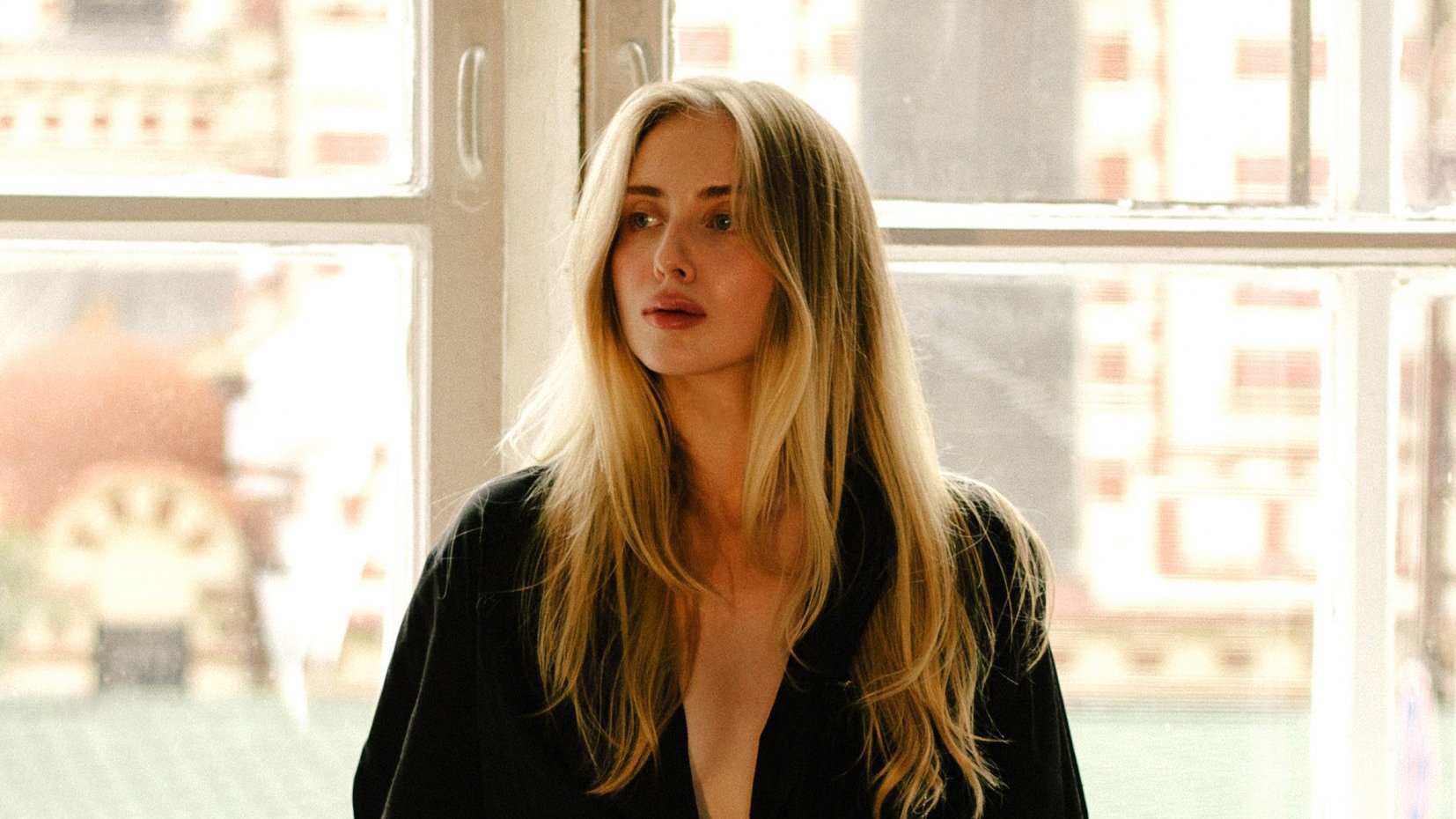Anhelina L Starkova explains how her experience of living through the Ukraine war has shaped her approach to curating the 2024 Tallinn Architecture Biennale in this interview.
Starkova, who was chief curator of this year’s biennale, is from Kharkiv in north-east Ukraine – a city that has suffered heavy bombardment since Russia launched its invasion in February 2022, coming close to being captured early on in the conflict.
According to the curator, she experienced something close to an epiphany not long after the war began, while taking refuge in the bunker in her house as bombs fell around it
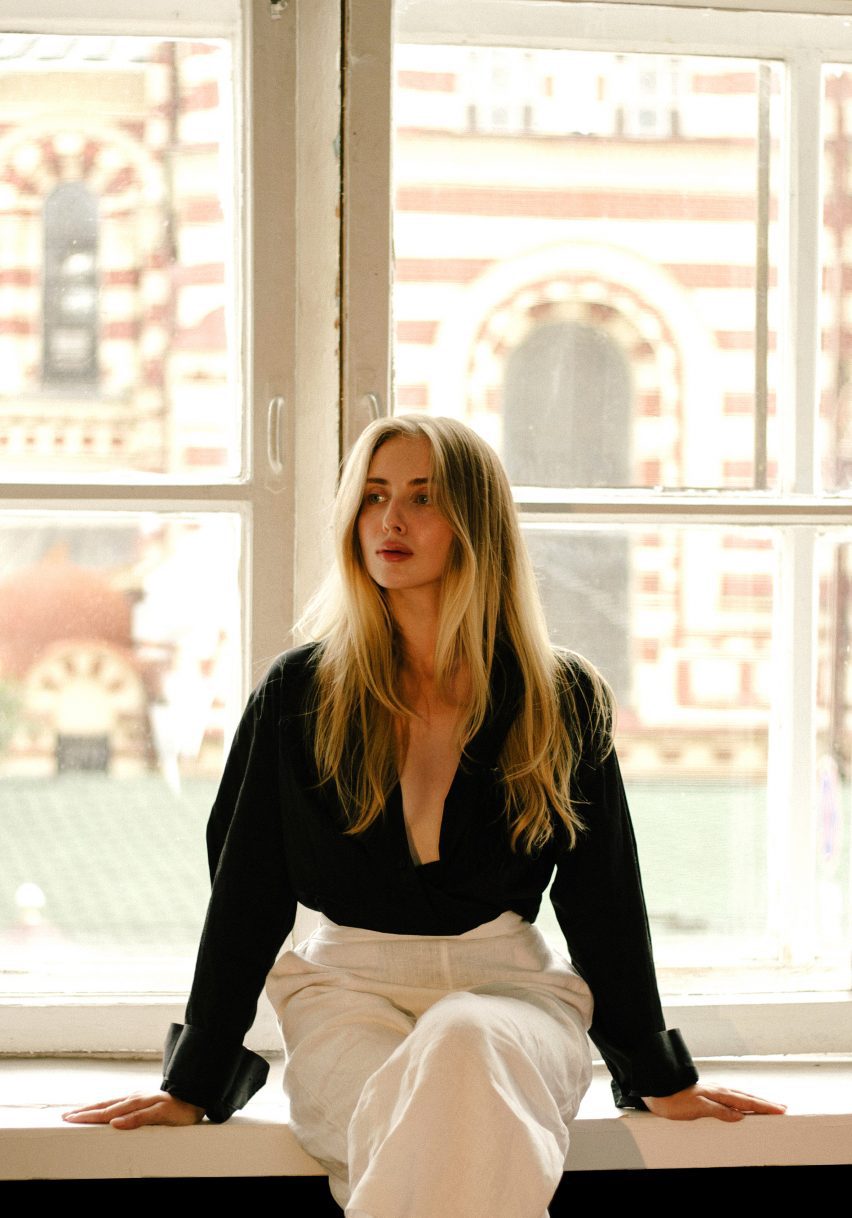
“I remember that planes were flying around, and the building was shaking, and it was really the moment when you understand that it’s probably your last minutes,” she recalled.
“I was standing with this wall, and I was thinking that this wall was a continuation of my body – this is me,” she continued.
“It was, for an architect, [a] very interesting feeling. Because I finished university, I had my 10 years in practice, and I still was not really immersed in architecture.”
“You always think it intellectually, but when I was in this bunker I started [to] think, ‘oh my god, this is the only one thing that can really save me – this wall is the only one thing that I need’. It was a very existential experience.”
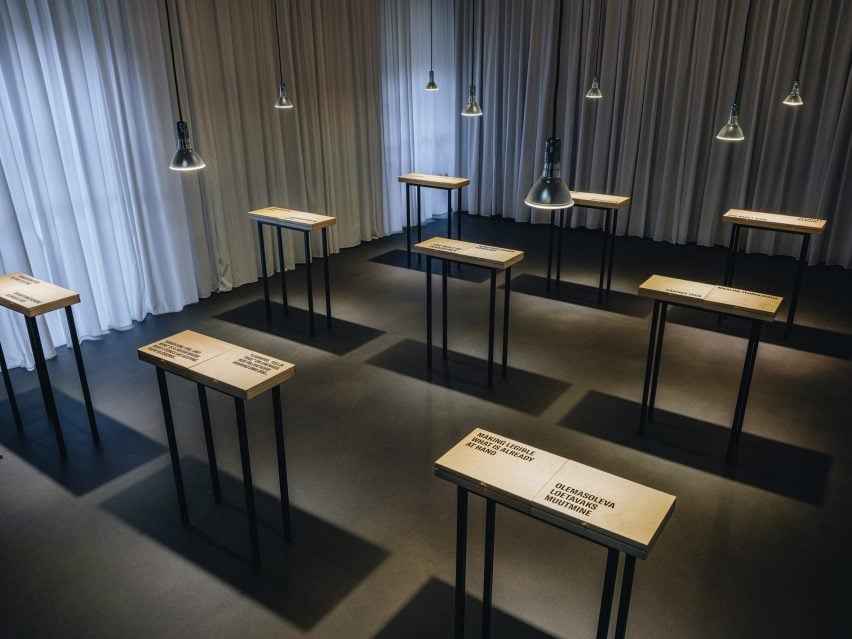
Later, while spending some time in Bucharest, visiting a shopping mall made her reconsider the value of architecture.
“There’s all this commercial architecture, and I feel such a disgust,” she told Dezeen. “Like it’s a cartoon, it’s not real. I felt it not with my brain but with all my body: we live in a world of complete illusion.”
In other words, Starkova said, the traumatic experience of the war has given her a new sense of clarity about what really matters in architecture.
“When the war started in the Ukraine, that was crucial for me as an architect,” she explained. “I didn’t expect that it would influence me so much personally.”
“Everything kind of started to be very clear: many, many things that we add to architecture – these addictive visions – are extra things, and they are not making buildings in a total way.”
“If I would like to continue [in architecture] then I would need to isolate myself from all this gallery of thinking, which I can’t stand anymore.”
Instead, Starkova, who as well as running her own studio lectures at the University of Applied Sciences of the Grisons and Kharkiv School of Architecture, has become more interested in the bare essentials of architecture.
“Really great architecture, it’s about durability factors, the functionality, but also giving people a kind of stability and safety,” she said. “In the end, it’s mostly about our immersion.”
Starkova has applied this back-to-basics philosophy to her curation of the seventh Tallinn Architecture Biennale, which opened in the Estonian capital last week.

At the centre of this year’s biennale is an exhibition exploring the theme of Resources for a Future, hosted by the Estonian Centre for Architecture.
Featuring 14 exhibits from studios including Gus Wüstemann Architects, KAMP Arhitektid, Déchelette Architecture and Pihlmann Architects, it examines different approaches to using local resources for creating new buildings and prolonging the life of existing ones.
“I had conversations with each architect that you have to look at the basics and the fundamental, real feel of what you are doing,” Starkova said.
“And even asked each architect, when you’re talking about resources, what really fosters you to do architecture, what supports you? And each installation showed the answers.”
For instance, Denmark-based Pihlmann Architects created a large model of a stripped-back building shell where part of each floor had been cut out and sloped downwards to form a ramp up from the floor below.
“It was really about this idea of purification,” said Starkova. “You see an old building and you just do not add anything. You see the nature of the building and you’re trying to heal it or to reformulate its elements.”
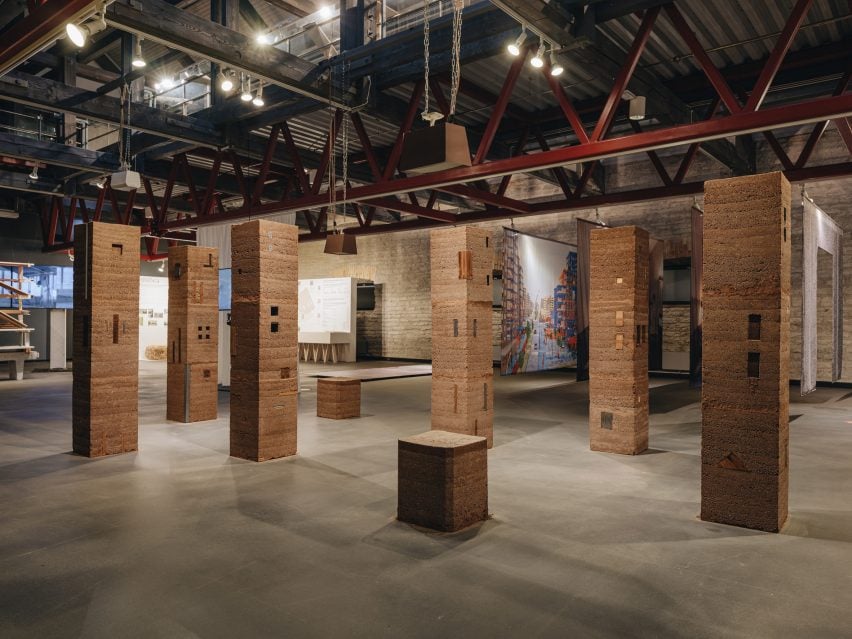
That, she said, is a lesson she learned while working on repairs to damaged buildings in Kharkiv during the war.
“You’re trying to compose it again, to heal it, and then it gets another conceptual environment – another feeling, and it’s already architecture.”
“Architecture is the constant process of thinking of your relation to materials, different elements, and assemblage of them in a holistic way.”
At the centre of the exhibition are a series of pillars erected by rammed-earth specialist Emmanuelle Déchelette of Paris studio Déchelette Architecture, with the material dug locally to Tallinn.
“It’s about doing a lot with nothing, that complete purification,” said Starkova. “To avoid this ideological or even social architecture.”
The participating architects were given a deliberately open brief, because Starkova felt the exhibition was “not about dogmas”. As a result, the exhibits are highly varied in form and approach.
They range from a huge chunk of a restored traditional Estonian log house by Apex Arhitektuuribüroo (pictured top) to an abstract proposal for a public space created only by digging by Romanian architect Laura Cristea and Swiss architect Raphael Zuber.
In another, Estonian studio KAMP Arhitektid presented research on the surprising breadth of potential building materials that can be found on one specific 15 square-kilometre piece of land in the country.
“Each project was a surprise because I didn’t know them personally before the exhibition, none of them,” said Starkova.
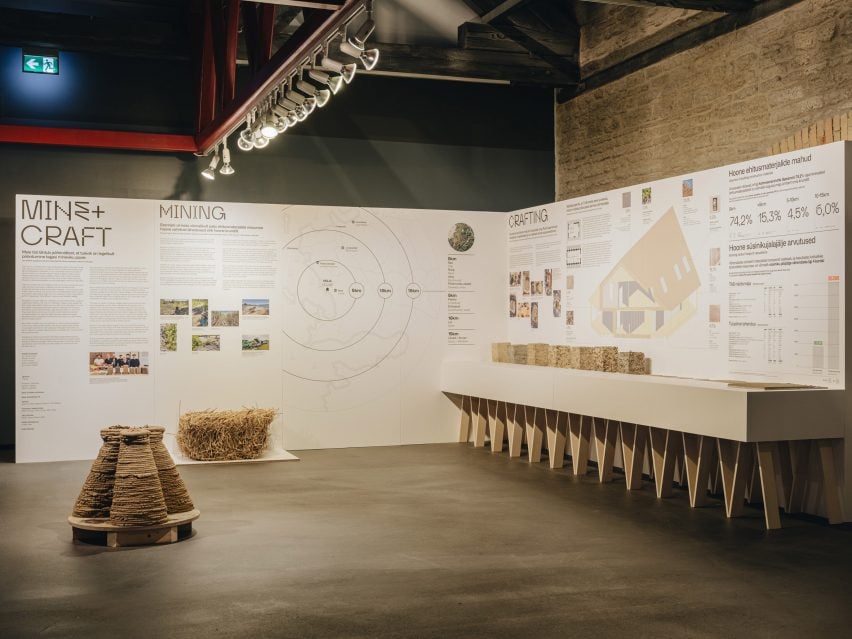
That effect was only heightened by the fact that Starkova managed the whole project remotely, only arriving in Tallinn a few days before the exhibition opened.
She began with a list of more than 500 architects whose work she admires, eventually selecting those who she felt “were the most radical in their thinking”.
The Ukraine war is referenced in one installation, produced by Elina Liiva and Helena Manna in collaboration with PAKK, composed of a series of images of apartment living rooms printed on translucent fabric and placed in a line, with chunk of concrete lying nearby that corresponds with a hole cut into the scene.
But beyond that, Starkova deliberately avoided making the conflict a direct focus of the exhibition, believing that it may detract from a sense of immediacy.
“During the war, it’s not a place for architecture – mostly a place for thinking,” she said.
“And yes, architects are trying to think, with the support of international world architecture, what could be done [after the war]. But I just wanted to stay honest and not be futuristic.”
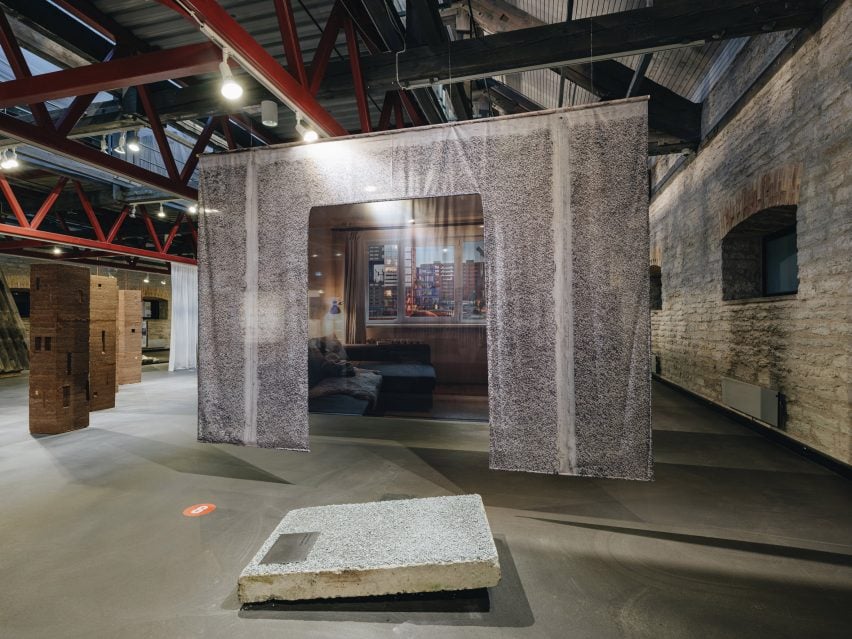
Overall, Starkova hopes the exhibition will enable visitors “to learn from architects that architecture is simple to do, and that the formulas are quite simple”.
As well as leading curation of the exhibition, Starkova was also head judge for the biennale’s customary pavilion commission competition, this time for a bus shelter at Tallinn’s Balti Jaam transit hub.
Out of more than 80 entries, the winner was No Time to Waste by Belgian architecture duo Brasebin Terrisse.
The central concept of the pavilion, which is still completing construction, was that the design would be led by whatever construction off-cut materials could be sourced in Tallinn.
“This was the only project who said that we have an open end – we do not propose [a] form of the installation, we prepare that we come to Tallinn, we test a local situation and after we will develop a form given when doing the work on it,” said Starkova.
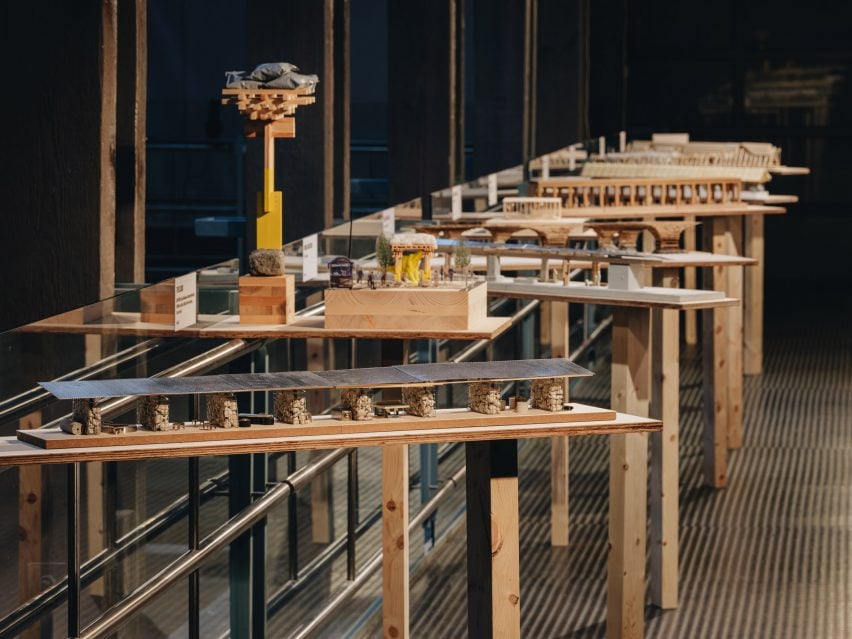
“So the rendering of the project itself is just a library of technology that they would like to use, but the form must be made later during the working process,” she added. “It followed the course of the biennale.”
With the biennale’s opening-week programme complete, Starkova has now returned to Kharkiv, where many buildings lie in ruins in a city that was previously celebrated for its rich and varied architectural heritage.
“It’s all so difficult,” she reflected. “Kharkiv is changing, it is in constant change.”
“It’s absolutely impossible to live, because you live in that mode of always existential crisis – on the edge, always. You go to bed, you don’t know you’re going to wake up. You go outside, you don’t know you’re coming back.”
Maybe it brings some beauty, because we actually live in this way, all of us – right on the edge.
The photography is by Tõnu Tunnel unless stated otherwise.
Resources For A Future will run until 1 December 2024 at the Museum of Estonian Architecture, Ahtri tn 2, 10151 Tallinn, Estonia. See Dezeen Events Guide for an up-to-date list of architecture and design events taking place around the world.

